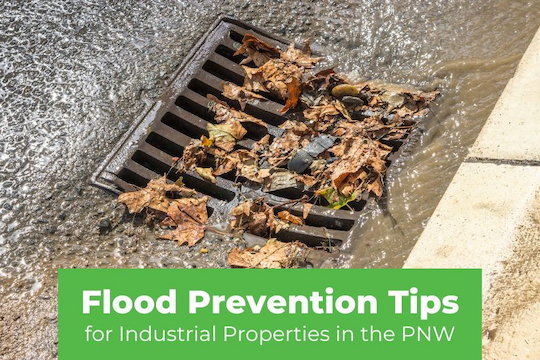As geographic areas become more urbanized, city developments convert the once forested or grassed land into suburban towns and urban cities. As these areas continue to grow, the accompanying increase in impervious surfaces such as paved streets, parking lots, and retail centers profoundly affects how stormwater moves both above and below ground after it rains.
This plays directly into the stormwater quality and, ultimately, water conditions in surrounding lakes, rivers, estuaries, and oceans.
Increased runoff has always plagued cities and other urban areas. Historically, the solutions mainly involved building systems to move the water away as quickly as possible, without much thought given to what happened downstream.
As urban development continues, this approach to stormwater management will cause continued long-term issues and challenges. Times have changed, and protecting local and downstream water quality and all the organisms that depend on fresh, clean water necessitates better approaches to the challenges of urban stormwater management.
The Urban Development Toll on Stormwater Management

Impervious, urban surfaces involve lots of concrete and asphalt, preventing water from soaking into the ground after it rains. Large, developed regions with systems to convey stormwater away from populated centers can turn a watershed area into a funnel, channeling and concentrating large flows of stormwater and pollutants, untreated, into the surrounding water bodies. While this might protect developments in the immediate area from damage and flooding, it worsens water quality for everyone downstream.
Increased Runoff
Urban stormwater management practices interfere with the way that mother nature handles rainwater. Bare land acts like a sponge, absorbing and filtering water into underground aquifers while also preventing the water from running off into other areas and taking pollutants. In cities, systems of curbs, gutters, pipes, ditches, and culverts transport water away, causing, among other things, minimal replenishment of underlying aquifers.
Studies have shown a direct relationship between the amount of land covered in urban areas and the biological health and condition of water bodies that receive the downstream stormwater runoff from these developments.
Concentrated Pollutants

As stormwater flows into various storm drains, the water carries car oil, hydrocarbons, sediment, organic matter, fertilizers, bacteria from animal waste, chemicals from manufacturing, and many other toxic pollutants. Much of this runoff goes straight into the nearest waterway without filtration or treatment.
Stormwater runoff also causes erosion and widening of receiving streams and rivers, and the degraded and polluted water supply causes aquatic life to suffer immensely.
Stormwater System Failures
A stormwater management system does its job well by receiving regular maintenance, inspections, and timely repairs when needed. Some homeowners association personnel do not have the education or expertise to manage their portion of the city’s stormwater system. Commercial properties may suffer the same fate.
Water Quality and Accountability
Because of the high potential for pollution, erosion, and other problems, stormwater regulations have become more strict in the past 15 years. State and local governments employ inspectors in each municipality to check in on private stormwater systems annually, report on any issues, and send out letters to property owners indicating necessary maintenance to stay in compliance.
Putting Stormwater in Its Place
Fortunately, plenty of options exist to address the challenges of stormwater management. Enhanced system features or changes in design can take advantage of natural land features to keep water in place and manage it on site.
- Proactive maintenance can maximize the existing system’s ability to perform. It can also minimize issues such as clogged storm drains, overgrown vegetation, erosion, or trash and debris that can block water flows and contribute to flooding.
- City areas can work with surrounding regional systems to integrate and leverage other knowledge and resources.
- Urban stormwater stewards can monitor types and amounts of pollutants over time, establish benchmarks for improvement, and spread public awareness messages to cut down on the quantity and type of pollutants on streets, rooftops, parking lots, and other runoff areas.
- Redesigning and integrating more natural features to manage stormwater in place and prevent runoff can have big payoffs in terms of improved water quality and supply.
How CatchAll Environmental Can Help

At CatchAll Environmental, our team possesses a wealth of experience in various stormwater management situations. Our staff has had exposure to many systems, which helps us understand complex issues and assist clients in implementing best practices.
We can assist in the annual inspection and maintenance of your stormwater system, proactively communicate with your municipality and submit paperwork on your behalf, and help you to qualify for municipal credits and rebates for your area. In short, we can put your stormwater system compliance on autopilot.
Let CatchAll Environmental take the pressure off and help your staff understand local and federal regulations set system performance benchmarks, and improve your system’s quality and performance over time.













